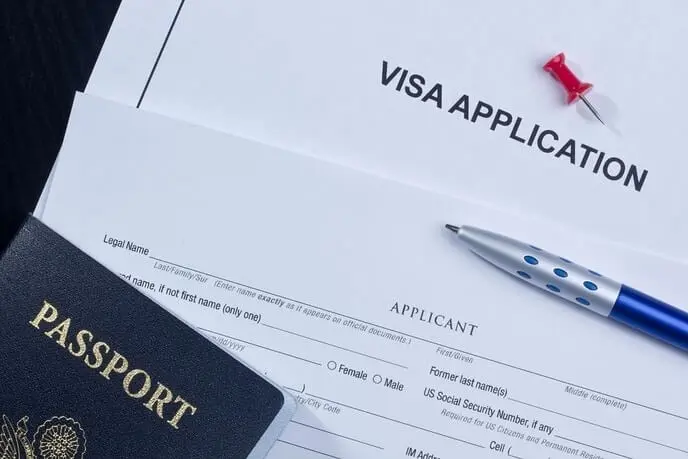Nova Credit is a cross-border credit bureau that allows newcomers to apply for U.S. credit cards, phone plans, and loans using their foreign credit history.
We and all of our authors strive to provide you with high-quality content. However, the written content on this website solely represents the views of the authors, unless otherwise specifically cited, but doesn’t represent professional financial or legal advice. As we cannot guarantee the accuracy or completeness of the published articles or sources referenced, please use the information at your own discretion.

The best first step in devising a strategy is figuring out your goals. Are you an entrepreneur who wants to open a U.S. office for your startup in the U.S.? Do you dream of earning a master’s degree and working in Silicon Valley after you graduate? Do you want to bring your parents to the U.S. to care for your children while you and your spouse are at work?
Here are some immigration basics to keep in mind and visa and green-card options to consider.
Visa Vs. Green Card
A nonimmigrant visa allows for a temporary stay of a few years. Some nonimmigrant visas offer the option to renew—and some allow for indefinite renewals. Under a nonimmigrant visa, you must satisfy the border agent that you do not intend to abandon your home country whenever returning to the U.S. from traveling abroad.
A green card, also known as permanent residency, offers a path to citizenship. Because of that, eligibility requirements for green cards are more rigorous than those for nonimmigrant visas. Moreover, each green card category is subject to a quota on both the number of green cards issued and the number of applicants from each country. If the number of green card petitions from individuals from a country outstrips the available supply, they must wait for a green card to become available.
The U.S. State Department’s monthly Visa Bulletin shows which green card petitions from which countries can move forward and which must continue to wait in line. Currently, individuals from India and China face years-long waits for green cards.
Options for Individuals
Most visa and green card options that enable you to live and work in the U.S. require an employer sponsor. A prospective employer would apply for a visa or green card on your behalf.
However, a few visas and green cards allow you to file your own application:
F-1 student visa allows you to attend a U.S. college or university to earn a bachelor’s, master’s or Ph.D. An F-1 would also allow you to work through the OPT (Optional Practical Training). Those in the STEM fields can work for an additional two years under the STEM OPT program. After completing those programs, the traditional path to remain and work in the U.S. is the H-1B visa. The H-1B has become very difficult to get.
B-1 business visitor visa would enable you to come temporarily to the U.S. to engage in business activities such as negotiations, board meetings, getting customer orders, and incorporating a new business.
If you possess “extraordinary ability” in the sciences, arts, education, business, or athletics, you could be eligible for an EB-1A green card. Your dependents would also be eligible to receive a green card.
If you have exceptional ability in the sciences, arts or business that will benefit the U.S., you could apply for an EB-2 NIW green card. Your dependents would also be eligible to receive a green card.
An EB-5 green card enables you and your dependents to live in the U.S. if you invest at least $500,000 in a company or project that creates at least 10 full-time jobs for U.S. workers.
Additional Options for Entrepreneurs
International entrepreneurs have a few additional visa options beyond the ones listed above:
EB-1C green cards for multinational executives enable an entrepreneur to come to the U.S. to live and work by opening an office for a company in the U.S.
If you’re an entrepreneur who is a citizen of a country with a trade treaty with the U.S. and you started your company in your home country, your company could sponsor you for an E-2 visa.
If your country does not have a trade treaty with the U.S., you can pursue an E-2 visa by first obtaining citizenship from a country with a trade treaty with the U.S.
A startup could sponsor its founder for an L-1A visa, which enables companies to transfer an executive from a foreign office to the U.S.
Canadian or Mexican entrepreneurs who work in one of these qualified professions can apply for TN (Treaty National) visas to work in the U.S. Their dependents are eligible for TD (Treaty Dependent) visas.
An H-1B or Entrepreneur-in-Residence program at a U.S. university. These programs enable entrepreneurs to get an H-1B visa to mentor business students while growing their startup in the U.S.
Options for Family
Green card and visa options exist for reuniting families—and soon-to-be families. A U.S. citizen or permanent resident can sponsor:
Parents
Married or unmarried adult children
Siblings
Only a U.S. citizen can sponsor a fiancé or financée for a K-1 visa. The K-1 visa enables a fiancé or financée to come to the U.S. to marry within 90 days. Afterward, the fiancé or financée becomes eligible to apply for a marriage-based green card.
Options for Faster Results
Some options exist to that may help reduce the wait time for some visas. Visa petitioners may request faster processing for certain employment-based petitions and applications, including E-2, H-1B, and L-1 visas. For a $1,410 premium processing fee, USCIS guarantees a decision on a petition or application within 15 calendar days.
Petitioners can submit expedite requests for petitions and applications that are ineligible for premium processing. USCIS grants these requests on a case-by-case basis due to an emergency, a severe financial loss to the visa candidate or the employer, a national interest or defense matter, or other reasons.
The last resort is filing a Writ of Mandamus to compel USCIS to make a decision on a petition or application. A Writ of Mandamus is a lawsuit filed against a government agency that asks the court to force the agency to fulfill its mandated duties, such as deciding an immigration case. The law requires USCIS to make a final decision on all immigration applications within a reasonable time. Under a Writ of Mandamus, a judge can order USCIS to make a decision.
Start your U.S. credit building journey on the right foot
A strong credit score helps you access a lot in the U.S., and a credit card is an easy way to start building your U.S. credit score. Access your free international credit score, and see which U.S. credit cards could be right for you.
More from Nova Credit:
The ultimate guide to the F-1 visa
The ultimate guide to the H-1B visa
The ultimate guide to the J-1 visa
The ultimate guide to the L-1 visa
The ultimate guide to the O-1 visa
How to check your USCIS case status
How to build credit after moving to the US
How to get a social security card
